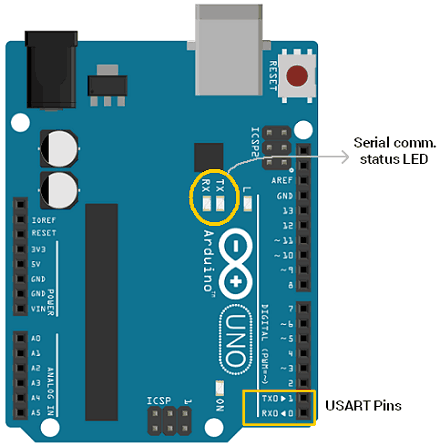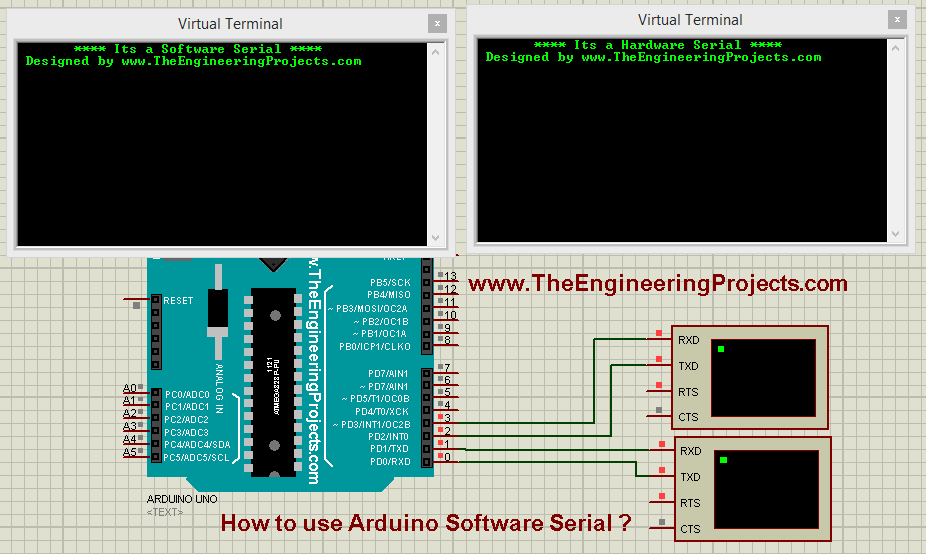Dec 22, 2020 This code sends data received in one serial port of the Arduino Mega to another. This can be used, for example, to connect a serial device to the computer through the Arduino board. This is a function in the Arduino String class which returns true if the string in question is equal to the parameter string. Serial inputs can be very useful in your Arduino project. It’s a bit more complex than serial output, but not by much! The key functions are Serial.available and Serial.read.
This example demonstrates how to read analog input from a potentiometer.
- 250 views
- 1 comment
- 0 respects
Components and supplies
| × | 1 | |
| × | 1 | |
| × | 1 | |
| × | 1 |
Apps and online services
About this project
The analog input is read and the result is printed in the Serial Monitor. When the shaft is turned all the way in one direction, there are 0 volts going to the pin, and the input value is 0. When the shaft is turned all the way in the opposite direction, there are 5 volts going to the pin and the input value is 1023. In between, analogRead() returns a number between 0 and 1023 that is proportional to the amount of voltage being applied to the pin.

Code

Schematics
Author
Arduino Serial Example
SBR
- 25 projects
- 14 followers
Arduino Serial Interface Adapter Diagram
Published on
June 7, 2020

you might like
Table of contents
Description
Used for communication between the Arduino board and a computer or other devices. All Arduino boards have at least one serial port (also known as a UART or USART), and some have several.
| Board | USB CDC name | Serial pins | Serial1 pins | Serial2 pins | Serial3 pins |
|---|---|---|---|---|---|
Uno, Nano, Mini | 0(RX), 1(TX) | ||||
Mega | 0(RX), 1(TX) | 19(RX), 18(TX) | 17(RX), 16(TX) | 15(RX), 14(TX) | |
Leonardo, Micro, Yún | Serial | 0(RX), 1(TX) | |||
Uno WiFi Rev.2 | Connected to USB | 0(RX), 1(TX) | Connected to NINA | ||
MKR boards | Serial | 13(RX), 14(TX) | |||
Zero | SerialUSB (Native USB Port only) | Connected to Programming Port | 0(RX), 1(TX) | ||
Due | SerialUSB (Native USB Port only) | 0(RX), 1(TX) | 19(RX), 18(TX) | 17(RX), 16(TX) | 15(RX), 14(TX) |
101 | Serial | 0(RX), 1(TX) |

On Uno, Nano, Mini, and Mega, pins 0 and 1 are used for communication with the computer. Connecting anything to these pins can interfere with that communication, including causing failed uploads to the board.
You can use the Arduino environment’s built-in serial monitor to communicate with an Arduino board. Click the serial monitor button in the toolbar and select the same baud rate used in the call to begin().
Serial communication on pins TX/RX uses TTL logic levels (5V or 3.3V depending on the board). Don’t connect these pins directly to an RS232 serial port; they operate at +/- 12V and can damage your Arduino board.
To use these extra serial ports to communicate with your personal computer, you will need an additional USB-to-serial adaptor, as they are not connected to the Mega’s USB-to-serial adaptor. To use them to communicate with an external TTL serial device, connect the TX pin to your device’s RX pin, the RX to your device’s TX pin, and the ground of your Mega to your device’s ground.
